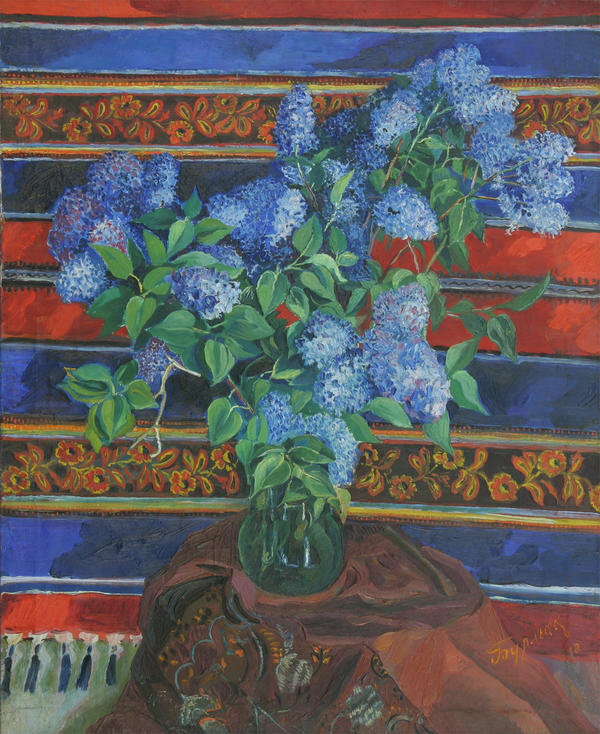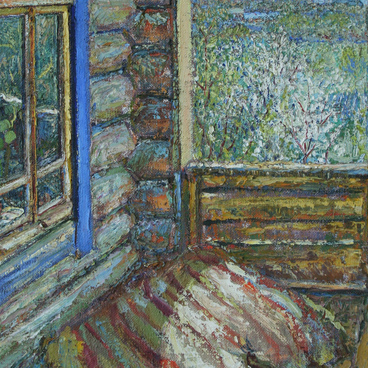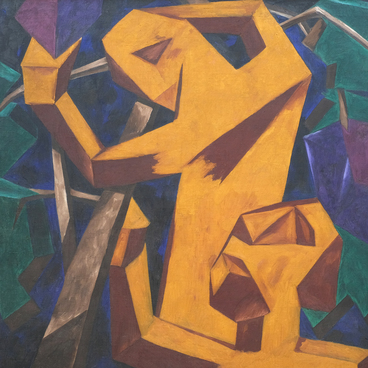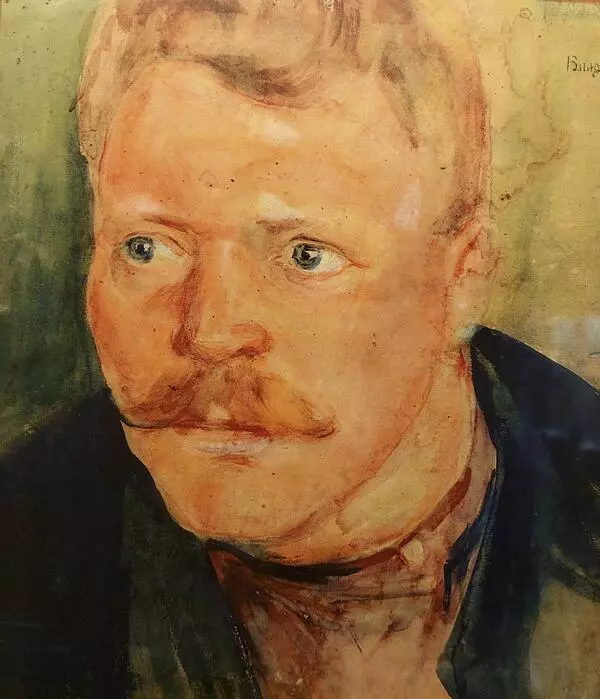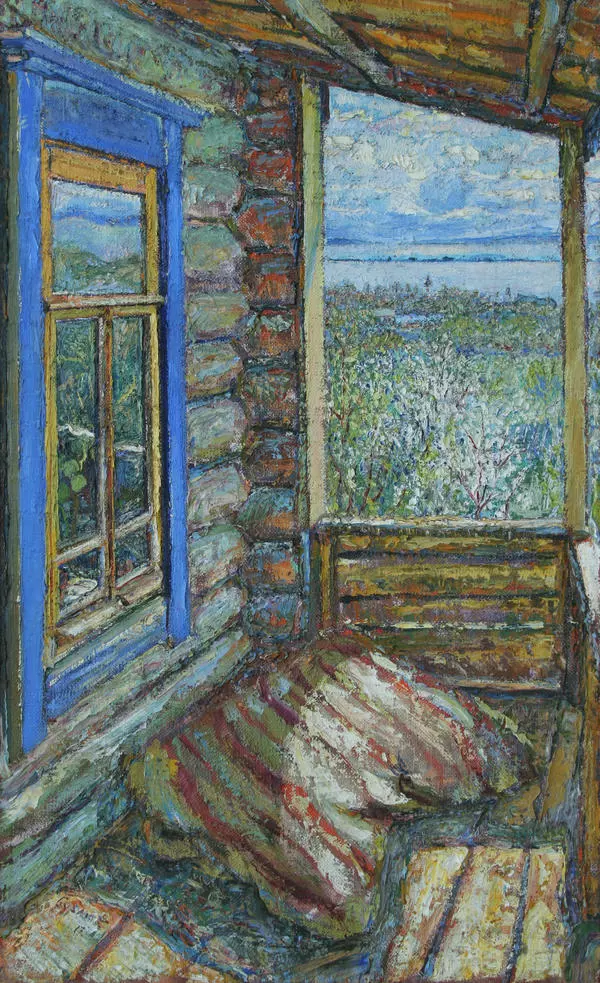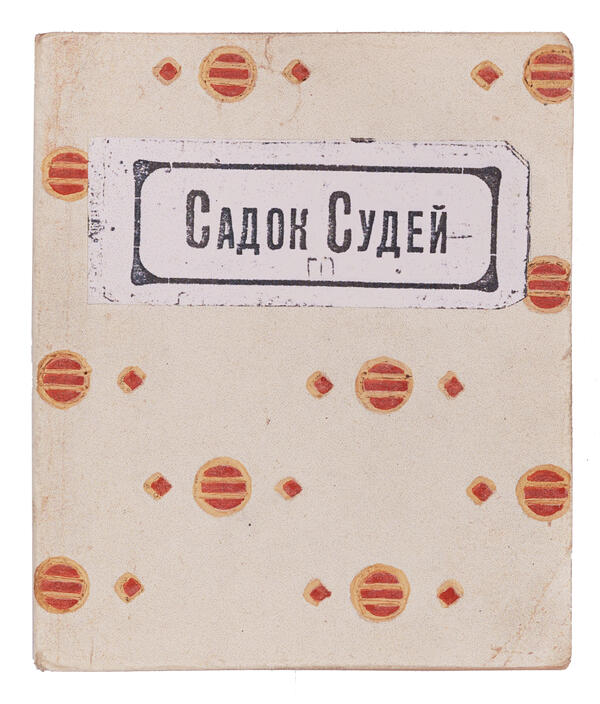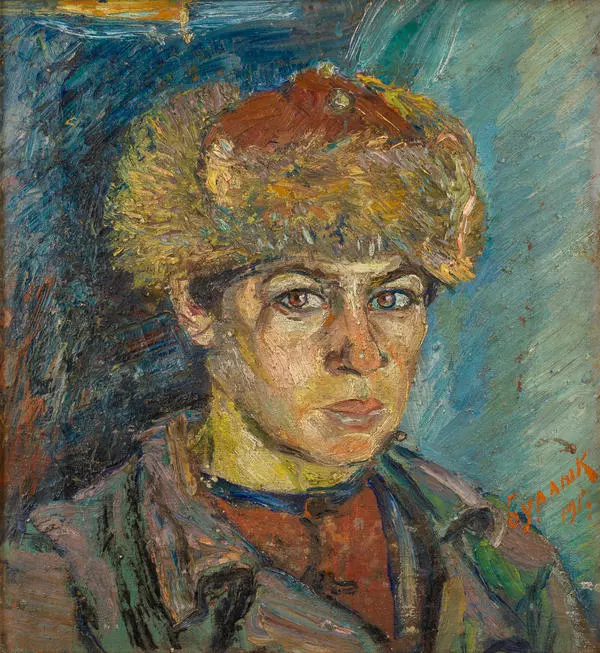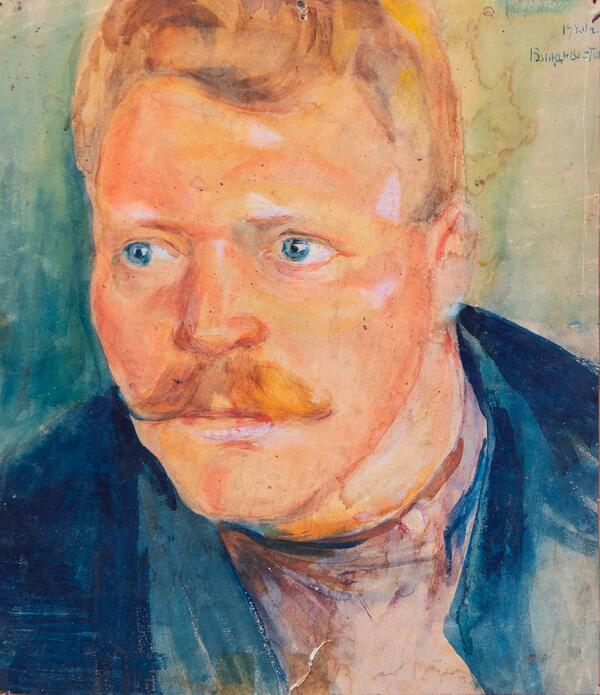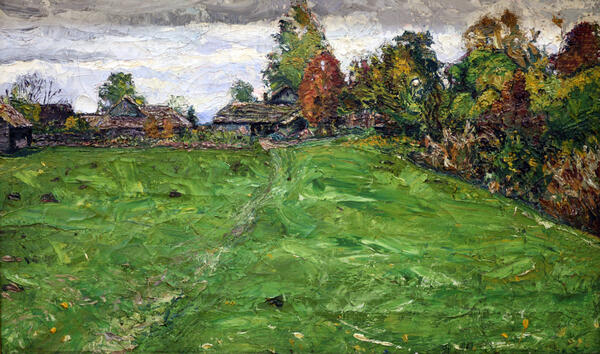The Lilac Blossom is one of David Davidovich Burlyuk’s most interesting paintings made while the artist lived in Bashkiria. He came here in 1915 after he was expelled from the Moscow School of Painting because of his strong interest in a “harmful and dangerous” futurism. He settled in the proximity of the city of Ufa with his family, where they spent three years. It is in that place that the Lilac painting was made, as suggested by its background of bright Bashkir rugs. The painting takes up its rightful place among the artist’s 38 works deposited in the M.V. Nesterov Art Museum of Bashkortostan.
Local artists in Ufa were excited by the arrival of such a prominent figure as David Burlyuk and enthusiastically welcomed him. In Bashkiria, the artist continued to actively promote the concept of futurism close to his heart. Here, he painted over 200 canvases experimenting with themes, genres, and pictorial textures. The artist combined the technique of cubism and futurism in his paintings, and made full use of impressionistic elements. Burlyuk was a founding member of the Jack of Diamonds group, which influenced his artwork.
Innovative painters asserted the principle of saturated colors and solid visual images. Objects and figuration became the core principle of their art. That is why the genre of still life came to the foreground because it was best suited to translating that principle into life. David Burlyuk also shared the concept, and in that period focused on capturing large forms on canvas. Those were mostly flowers also well loved by a French artist Paul Cezanne. David Burlyuk was a big fan of Cezanne, which explains the presence of impressionistic elements in his artworks.
However, while the French impressionists conveyed the message by using space, among other things, the members of the Jack of Diamonds focused primarily on the massive texture of their paintings. The artists working in that style moved in the opposite direction: from impressionism to cubism and futurism. They were focusing on monumental forms and striking artistic images. In the Lilac Blossom, such an image is produced by a big bouquet. In art, the theme of blossom has always been associated with spring and rejuvenation. In this case, the connection is not so obvious. It is more about an evolutionary process experienced by the Jack of Diamonds artists in search of forms, textures, and compositions.
The above theoretical foundation is not intended to overly complicate the perception of a simple subject, the lilac blossom in a vase. It is needed for a better understanding of the kind of a lens the artist used when looking at the objects around him and why he painted them in the way he did. It is not accidental that the light and air medium is absent from the Lilac Blossom: it is all colors and paintwork. In the artist’s own words, it is those vehicles that would symbolically represent light. They also fill the canvas with breathing air for more than one generation of admirers of the artist’s talent.
Local artists in Ufa were excited by the arrival of such a prominent figure as David Burlyuk and enthusiastically welcomed him. In Bashkiria, the artist continued to actively promote the concept of futurism close to his heart. Here, he painted over 200 canvases experimenting with themes, genres, and pictorial textures. The artist combined the technique of cubism and futurism in his paintings, and made full use of impressionistic elements. Burlyuk was a founding member of the Jack of Diamonds group, which influenced his artwork.
Innovative painters asserted the principle of saturated colors and solid visual images. Objects and figuration became the core principle of their art. That is why the genre of still life came to the foreground because it was best suited to translating that principle into life. David Burlyuk also shared the concept, and in that period focused on capturing large forms on canvas. Those were mostly flowers also well loved by a French artist Paul Cezanne. David Burlyuk was a big fan of Cezanne, which explains the presence of impressionistic elements in his artworks.
However, while the French impressionists conveyed the message by using space, among other things, the members of the Jack of Diamonds focused primarily on the massive texture of their paintings. The artists working in that style moved in the opposite direction: from impressionism to cubism and futurism. They were focusing on monumental forms and striking artistic images. In the Lilac Blossom, such an image is produced by a big bouquet. In art, the theme of blossom has always been associated with spring and rejuvenation. In this case, the connection is not so obvious. It is more about an evolutionary process experienced by the Jack of Diamonds artists in search of forms, textures, and compositions.
The above theoretical foundation is not intended to overly complicate the perception of a simple subject, the lilac blossom in a vase. It is needed for a better understanding of the kind of a lens the artist used when looking at the objects around him and why he painted them in the way he did. It is not accidental that the light and air medium is absent from the Lilac Blossom: it is all colors and paintwork. In the artist’s own words, it is those vehicles that would symbolically represent light. They also fill the canvas with breathing air for more than one generation of admirers of the artist’s talent.

